Best Indonesian Coffee – Beans, Brands, and Kopi Luwak
by Bryan Albuquerque
Before we dive into the topic of where the best espresso beans in the world come from a geographical standpoint, we ought to clarify one point which often comes up.
People often ask, what is the difference between an espresso bean and a coffee bean?
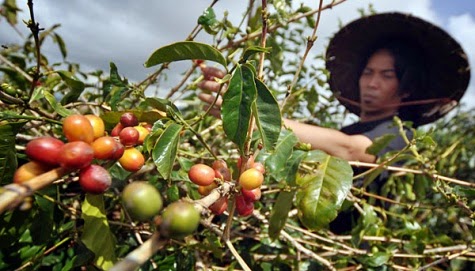
To be clear, coffee beans and espresso beans are really the same bean, with the difference being in what happens to the bean after it is harvested, bagged, and shipped.
The next step in the preparation process which really defines what you are preparing as espresso, as opposed to coffee, is the grinding of the bean, which determines your grind’s fineness or coarseness.
Generally, a finer grind is desired for espresso.
Once we have ground our beans specifically for espresso, it is then up to our preferred brewing method that dictates how your coffee beverage will ultimately turn out, whether its non-espresso or espresso, poorly made or well done.
So, then, although you can use any type of coffee bean to prepare espresso, certain types of coffee cherries lend themselves to a better cup of espresso than others.
In this article, we want to focus on one of the best places in the world which supplies us with the best beans for making the finest cup of espresso possible.
And that place is none other than…Indonesia.
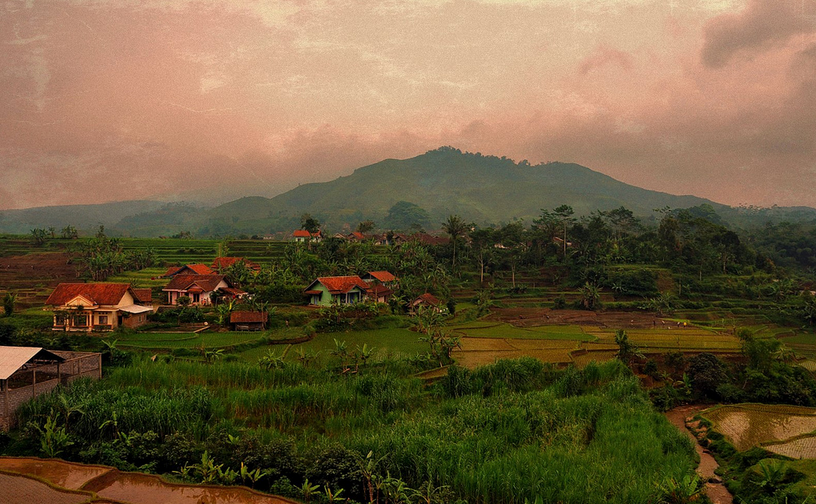
You’ve no doubt heard of Indonesian Sumatra, one of the most popular types of coffee available which is known for its smooth, full-bodied texture, and its chocolate-y overtones.
Sumatra coffee beans also make for an unparalleled cup of espresso.
Table of Contents
- Best Indonesian Coffee Beans
- Indonesian Coffee Trade – A Short History
- Why Indonesia Produces Some of the Best Coffee Beans In The World
- The Palm Civet
- Palm Civet Moral Dilemma
- In Conclusion
Alright, let’s get to it!
| Premium Kopi Luwak From Indonesia Wild Palm Civets Arabica Coffee Beans (25 Grams) |
|---|
| Dark Roast Arabica Coffee Beans – Indonesian Sumatra |
| Antipodes – Ground Coffee |
And now…a short history of Indonesian coffee.
Indonesian Coffee Trade – A Short History
You can trace the origins of coffee in Indonesia back a long way – back to the establishment of a port known as Sunda Kelapa in 397 AD, which sits at the mouth of the Ciliwung river.
Here is a picture of the historic harbor in more recent times.
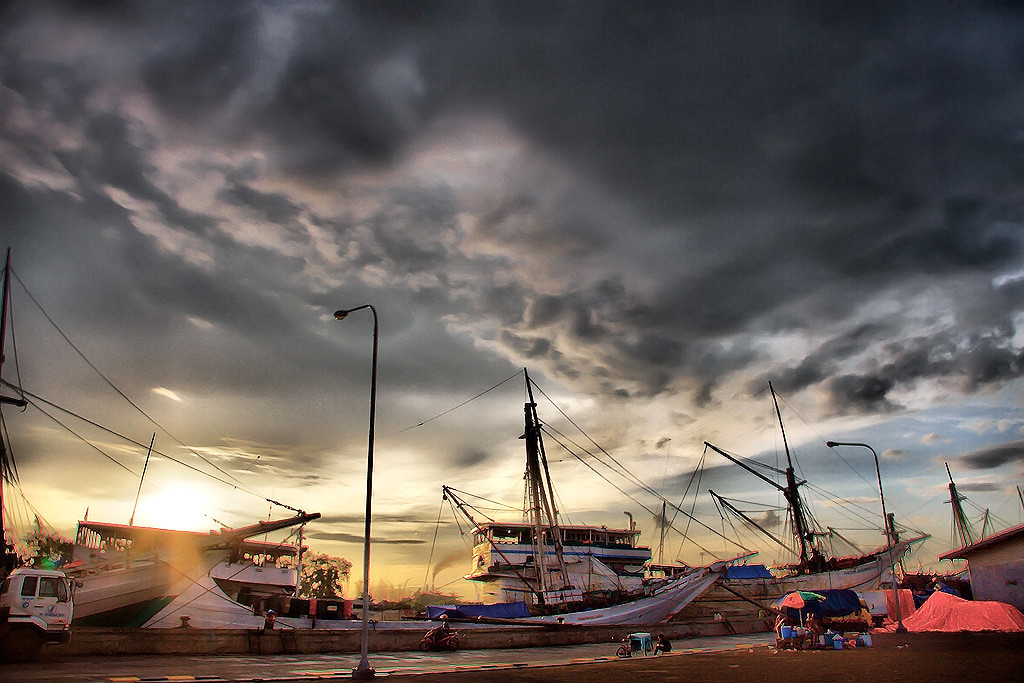
It was the geographically strategic Sunda Kelapa (“Coconut of Sunda”) port that, at the time, connected Indonesia to the rest of the world in terms of trading goods.
This made it possible for coffee to arrive here when it did in the 1600’s.
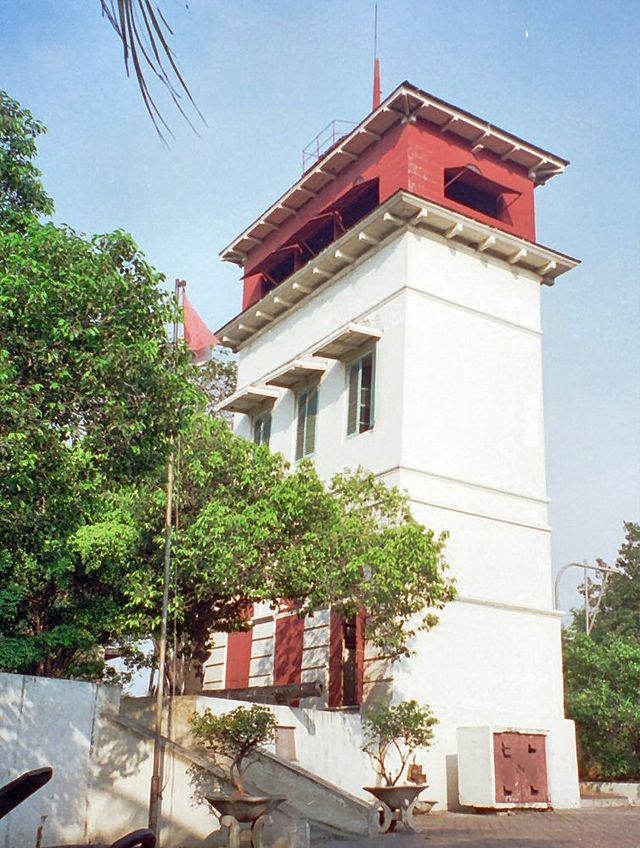
From this watchtower pictured on the right, perhaps you can imagine the harbour-master watching the ships come and go in 13th century Indonesia, keeping a stern eye open for pirates and other robbers would would frequent the area.
The trade ships would, of course, supply the region with numerous wares; one of the biggest trade items being pepper, for which Indonesia was then globally renowned.
Take a look at this quick video of this great and historic port which was responsible for coffee’s arrival to Indonesia all those years ago:
Were it not for this thriving port located in present day Jakarta (formerly Batavia), the ship carrying the very first arabica coffee seedling from Malabar (a gift from a Dutch governer) may not have arrived to this exact spot in 1696.
From that critical moment onward, Indonesia went on to become on of the largest purveyors of fine coffee beans in the world, with over 20 varieties of their most widely-produced type of coffee, Coffea Arabica.
This includes such varieties as Linie S, Hibrido de Timor, Caturra, and, of course, Typica (the original Dutch import).
Why Indonesia Produces The Best Espresso Beans In The World
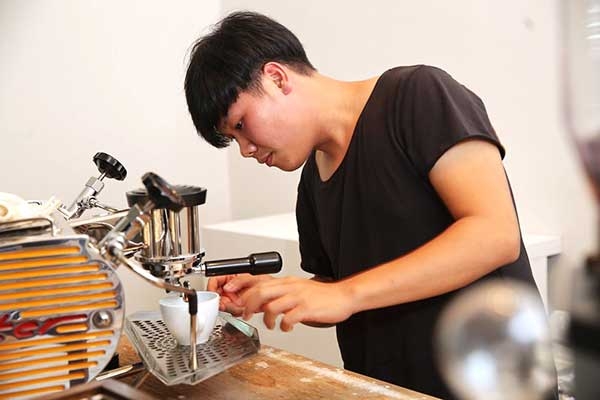
Here now is a short documentary you can take a look at if you wish called “Coffee Value Chains” (2014).
This doc is all about specialty coffee production in Indonesia today, and definitely will give you an idea as to why Indonesian coffee and espresso beans are of such a high quality overall.
Coffee Value Chains is one of the best short documentaries on the topic of coffee farming in Indonesia, and was made in cooperation with the University of Sydney, and directed by Indonesian director Febriansyah Marcel.
The reason we appreciate it so much is because it clearly illustrates how the relationship between the coffee farmers and the coffee buyers can be such an important one.
Check it out if you have a few minutes!
Ok, now that we’ve seen some evidence as to why Indonesia is one of the key countries producing the best coffee and espresso beans in the world, lets return again to everyone’s favorite subject – history!
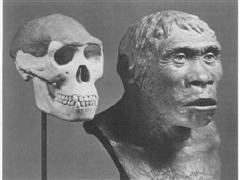
One interesting tidbit you may not know about Indonesia itself is that the word java, which we all use as a synonym for coffee, originated there.
Yes folks, the island of Java, which is the most populous island in the world with 143 million people, was also home to one of the first upright walking hominims, homo erectus, aka “Java Man”.
It strikes us as no mere coincidence that the same place which is home to earth’s first intelligent humans is also home to some of the best espresso beans in the world.
One might even think that coffee and intelligence are intrinsically connected. (Of course they are!)
As we mentioned earlier, 1696 was an important year in Indonesian coffee history, because that was the year that the first Yemeni arabica coffee seedling arrived in the Dutch colony of Batavia, which is now Jakarta, the capitol of Indonesia.
In the current global market, Indonesia is the forth largest coffee producing nation, with many of the key characteristics we’ve mentioned before that make it perfect for growing coffee, such as mountainous regions and proximity to the equator.

Compared to Brazil (a giant of a country compared to Indonesia), which produces several million tonnes of coffee, Indonesia produces relatively less at 540,000 metric tons of coffee (split between coffee arabica and coffee robusta beans) produced annually on small, 1-hectare organic coffee farms.
These small scale productions definitely are another reason why Indonesian espresso is so good.
We might compare these small farms to family owned and operated diners, where so much care is put into the product and everything is done by hand.
What is perhaps surprising about Indonesians and their coffee is that almost a third of it is consumed domestically.
In other words, Indonesians love drinking their own espresso (like, really love it, to the point of keeping one third to themselves) – and, we must admit, for good reason!
Indonesia’s Secret Weapon For Coffee – The Palm Civet
Another big reason that Indonesian espresso beans are of such high quality can be attributed to our little friend on our right – the asian palm civet.
“So what does the palm civet have to do with great espresso?” one might ask. Well, brace yourself – because the answer is something you may not expect.
If you care to watch this video here, you will get the answer! 🙂
So, yes, its true…once the palm civet works its special magic with those espresso beans in its digestive tract, the resulting feces are as good as gold to coffee farmers from Indonesia.
Before you think about it too much, watch this quick video where this lucky fellow gets to try the resulting “cat poop” coffee and see his reaction.
To recap, this “cat poop coffee” is some of the priciest coffee in the world, produced from the coffee berry seeds that the Kopi Luwak (Asian palm civet) has eaten and then defecated.
But wait until you try the cap poop espresso – even better! On the left is one of our favorite Kopi Luwak coffees.

Farmers of these unique coffee beans argue that the civet’s coffee bean selection and digestion process are the keys to its unique and nuanced flavor.
Our friend the palm civet only likes to eat only the choicest of coffee berries, and then from there its natural digestion process magically improves their flavor.
As the beans absorb the civets’ digestive enzymes, this affects the peptides and amino acids contained in the coffee beans, and changes them in subtle ways.
The seeds (aka the beans) of the cherry then go through some kind of a special fermentation process, and the resultant feces from the civet contains the magic beans!
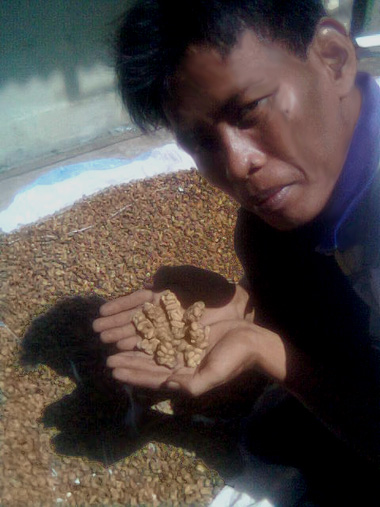
After the palm civet does its thing, and then the farmers sift through all of the beans to find the choicest beans of the bunch, what we are left with is pure quality espresso beans.
Now if that doesn’t pique your interest and make you want to try these magic beans for yourself, we don’t know what could!
Palm Civets and Coffee – The Moral Dilemma
We feel that we would be remiss if we did not mention that there is a bit of a controversy swirling around the Asian palm civet.
These poor little coffee cherry- eating critters are sometimes taken advantage of, caught by poachers and caged for their naturally awesome coffee-producing talents.
This video should give you an idea of what the issue here is…
If you didn’t notice, these Kopi Luwak(or civet cats, as they’re called) are being caged by farmers, held in captivity, and basically forced to produce (as in eat and then defecate) as many coffee beans as these farmers can get from them. To put it mildly, this is not good!
According to this video, there are other reasons that poachers capture these wild civets, such as for their meat, but now they have another option as well: sell them to coffee farmers who want them alive.
An argument is even made to say that coffee farmers are actually “saving” the Luwaks from getting killed by the poachers.
Here is another video on this topic.
It sad have to share this information, but its better that more people know about this than not know in order to raise awareness on this issue and so that people can make more informed decisions when buying this type of coffee.
One thing we know is that these civet cats don’t do well in cages, and they also are rather solitary animals so being kept together on a farm really does them no favors.
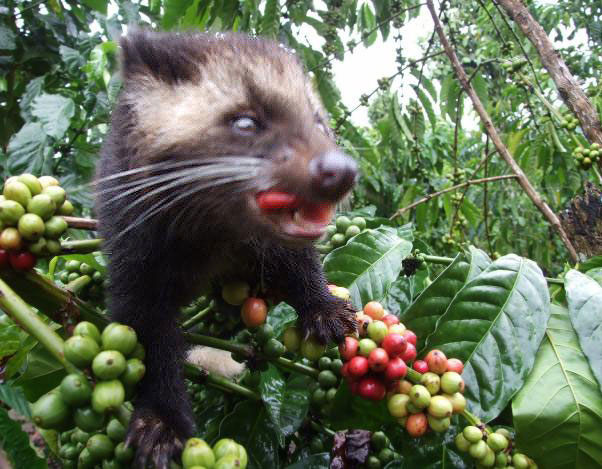
Which is why we are trying to say that if you are going to buy Kopi Luwak coffee for the purpose of making espresso or otherwise, please stick to the the beans which are harvested from the wild Kopi Luwak feces.
If you read the product description and customer reviews, you can see that this is a brand of coffee that actually works in conjunction with the locals to ensure that no civet cats were abused in order to obtain this coffee.
Some even say that you can tell by the taste!
Obviously, we all should want to support the production of coffee which is ethical and looks out for everyone, including the Kopi Luwak or civet cat, who just happens to have a magical digestive system and loves eating coffee cherries.
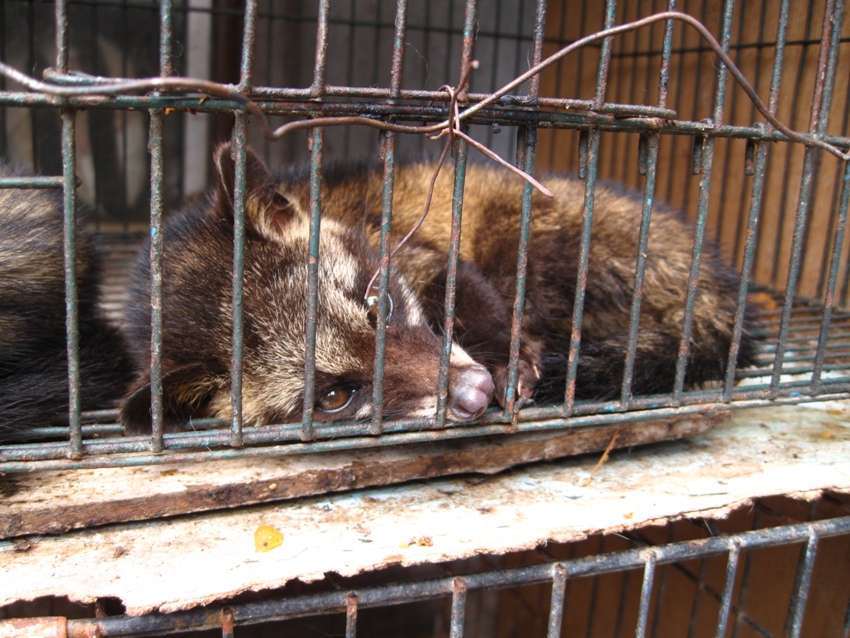
We also should mention to those of you reading who don’t have a lot of sympathy for these poor creatures (for shame!), you should know this – civet cats just so happen to choose the best beans when they are wild, as they are in their natural habitat and using their civet cat coffee-sniffing sensors to detect the best coffee berries.
So even based purely on the evidence at hand, one would still want the civet cat to roam free in order to select its beans, since it doesn’t behave the same in captivity.
Its simply better for all involved when the civet cats are free.
Indonesian Coffee – In Conclusion
As you can see, there are many reasons that Indonesia produces the best espresso beans on the planet; some of which you might not expect (eg. palm civet poop).
We want to touch on one more reason that Indonesian espresso is a cut above the rest.
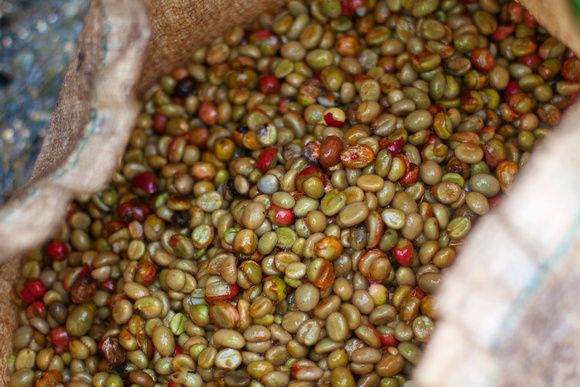
The top java from Indonesia is often produced through wet processing, which they call “giling basah”.
As the term “wet processing” suggests, this involves “washing” the coffee beans, which removes the fruity material of the beans, while the coffee cherry remains as moist as after being freshly picked.
In more technical terms, the pulp of the coffee bean is removed, fermentation is used, and then the beans are dried via sunlight or air-drying. This reduces the coffee’s moisture content to about 10%.
If you want to get an even better idea of how wet processing works, check out this great video (below), which focuses on the wet processing of specialty arabica green coffee beans in the West Java highlands.
The video description gives a lot of detail into the specifics of the process, and if you do watch the entire video, you will have an even clearer idea of what goes into the processing itself.
Again, these are great beans for espresso, so if you want more information on the the Javerno Specialty Arabica Wet Processing Facility, click here to visit their website.
 |
 |
 |
 |

About Bryan Albuquerque
Bryan Albuquerque is a coffee lover and vaping advocate who writes reviews and information about coffee accessories and KYG. A former coffee addict, Bryan traded his morning fix for an electronic cigarette in an effort to quit smoking, and has never looked back. He's dedicated to helping others make the switch to vaping, and believes that it's one of the best decisions anyone can make for their health.
Thoughts on "Best Indonesian Coffee – Beans, Brands, and Kopi Luwak"
 |
 |
 |
 |
Get FREE Coffee Gifts now. Or latest free grinders from our best collections.
Disable Ad block to get all the secrets. Once done, hit any button below
 |
 |
 |
 |


